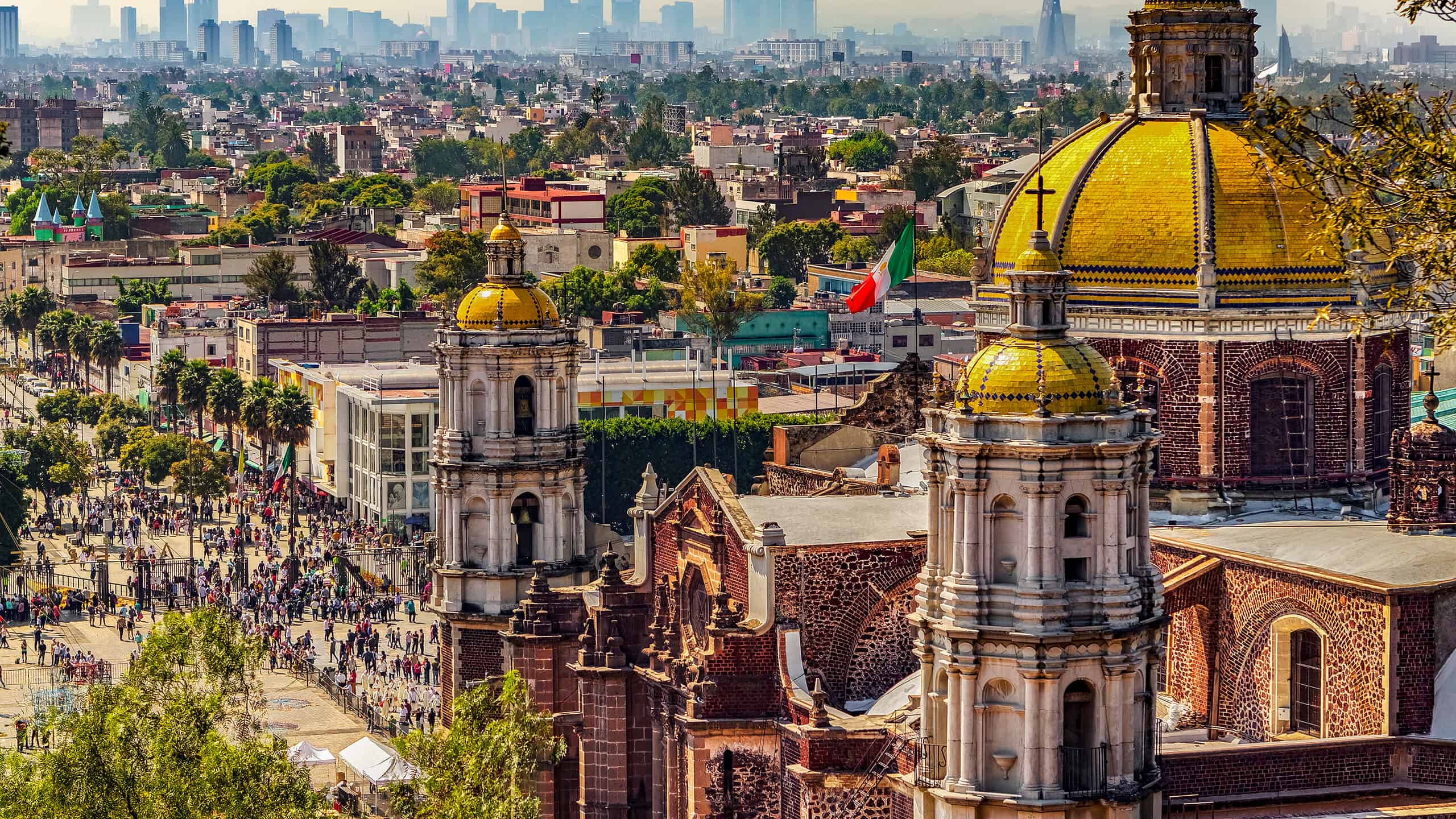Many of the world’s most important urban centers are slowly sinking into the earth. While this might sound like hyperbole, it’s the truth.
For a variety of reasons, several of the world’s most important financial and cultural centers are experiencing a phenomenon known as subsidence. This scientific term refers to the vertical movement of land from either man-made or natural sources.
This phenomenon offers scientists and governments unique challenges in terms of how to adapt. In addition, it offers us possible glimpses of what the future of our planet might look like.
If you’re interested in the subsidence phenomenon, here’s a list of some of the most notable examples of cities around the world that experience this issue.
1. Jakarta

Jakarta is the largest city in Indonesia.
©Akhmad Dody Firmansyah/Shutterstock.com
This massive Indonesian metropolis is the world’s most rapidly sinking city. Every year, it plummets another 6.7 inches deeper into the earth. While that might not seem like much, that’s practically a sprint in geologic time.
Much of the subsidence that is occurring here is due to the removal of groundwater from beneath the city. This process serves its 10 million citizens fresh drinking water. The removal of this water destabilizes the soil surrounding the city, which is typically compacted from moisture.
Many of these wells are run by the Indonesian government. However, illegal wells also exist, compounding the problem. The city’s issue with subsidence is also exacerbated by its proximity to the ocean. This means that the city is prone to flooding with the shifting of sea levels.
These problems have become so severe that the Indonesian government has made plans to develop a new capital for the region. This city is going to exist many miles inland. This new city has the planned name of Nusantara.
Migrating the population of this massive city inland in order to populate this new capital will be no small task. This is partly because there are currently over 34.5 million people living in its urban area, making it one of the densest in the world.
2. New Orleans
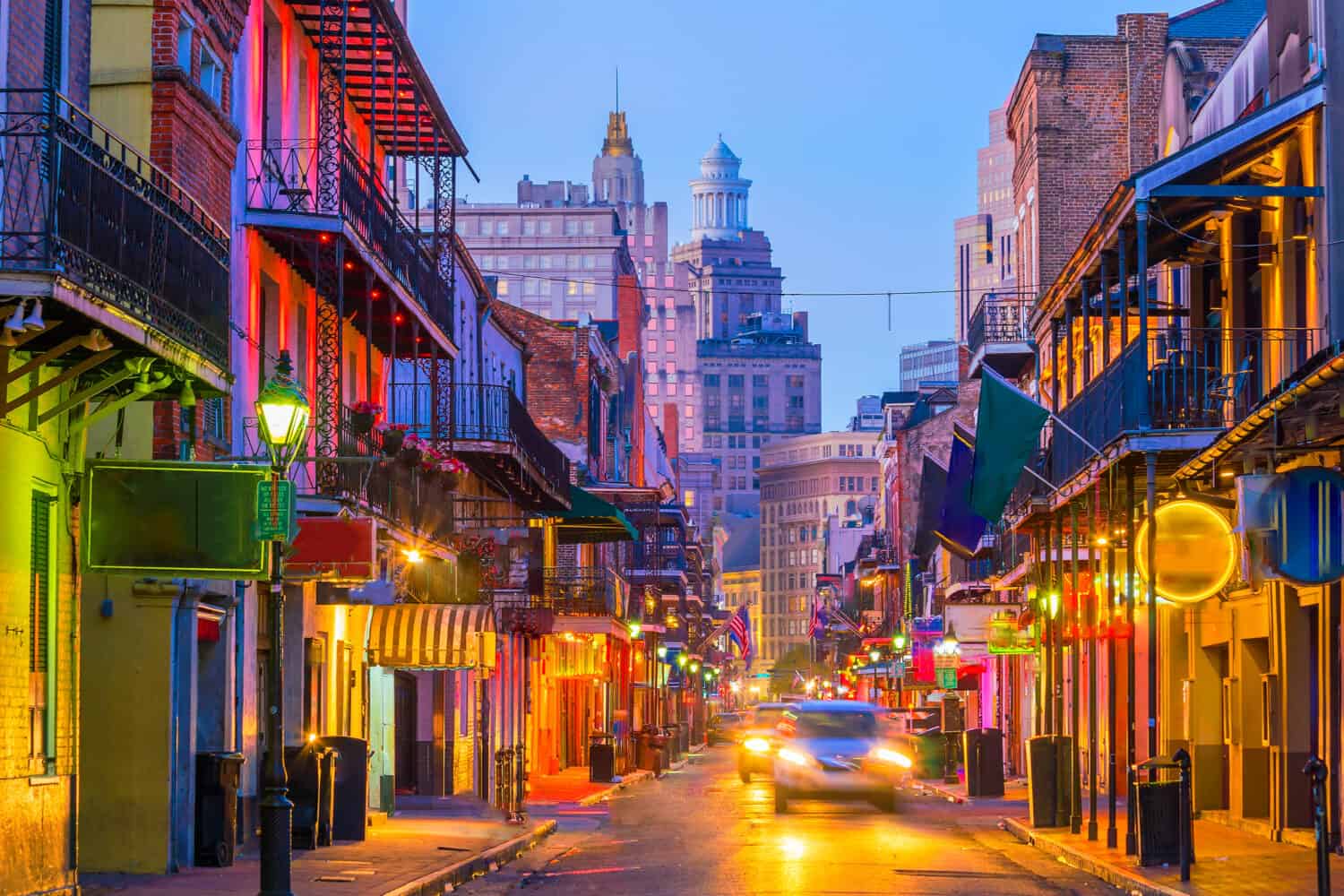
New Orleans is highly vulnerable to coastal flooding.
©f11photo/Shutterstock.com
This entry might not come as much of a surprise. New Orleans has become one of the poster children worldwide for its deep vulnerability to sinking. This is thanks to the effects of climate change, as well as the type of terrain that it’s built on top of.
This vulnerability comes from a number of contributing factors. New Orleans is a coastal city that lies on the Gulf of Mexico, a region famous for its fierce hurricane activity.
On top of this, much of New Orleans is actually below sea level in elevation — and getting lower every day, thanks to the effects of subsidence. New Orleans is also on top of the soft mulch of the Louisiana swamp. It’s not exactly the firmest terrain to place a city on top of.
In addition, the city and state of Louisiana have participated in long-term oil and gas projects. These projects have weakened the integrity of the ground beneath the city. This makes it more vulnerable to the subsidence phenomenon.
3. Venice

Venice is constructed on a series of islands.
©travelwild/Shutterstock.com
This entry is one of the world’s most famous locales, beloved by Italians and tourists alike for its uniqueness and beauty. As one of Europe’s cultural and artistic capitals, it’s a destination for millions each year.
The compact urban area is built over a series of over 120 small islands. This contributes to its idiosyncratic nature, as many parts of the city are only accessible via boat or through footpaths. Many routes take you over connecting bridges through a web of canals.
These qualities that make this place so beautiful are, unfortunately, the same ones contributing to the problems it now faces. The city is sinking due to rising sea levels, as well as the subsidence caused by the weight of its buildings on the islands below.
Some studies have estimated that this city might be as much as 40 milliliters below sea level by the year 2050. The city government has erected natural barriers surrounding vulnerable areas in order to attempt to deter this process from occurring.
4. New York City

New York is sinking under its own weight.
©Sean Pavone/Shutterstock.com
Up next is one of the world’s major cultural and financial centers — and it is also under threat from some of the effects of sinking.
This is particularly true in the island borough of Manhattan, which hosts numerous global and national landmarks. Examples include the New York Stock Exchange and the United Nations. As you can imagine, protecting these institutions is in the interest of quite a few people.
Manhattan is experiencing a sinking issue from several sources. This includes the surrounding ocean and the weight of the massive urban infrastructure above.
This subsidence phenomenon doesn’t affect every part of the island evenly. Some parts of New York are built upon a firm bedrock of what’s known as Manhattan Schist. On the other hand, others are built upon artificial islands of terra firma in the bay. Subsidence more acutely affects the parts of the city built upon the latter.
Some studies have estimated that the city is sinking toward the Earth at a rate of .04 to .08 inches per year. Although that might not seem like much, small differences can have major impacts on the lives of everyday people in this regard. New York has responded to its subsidence issue with plans to construct natural barriers. These barriers will surround some of the more vulnerable parts of the island.
5. London
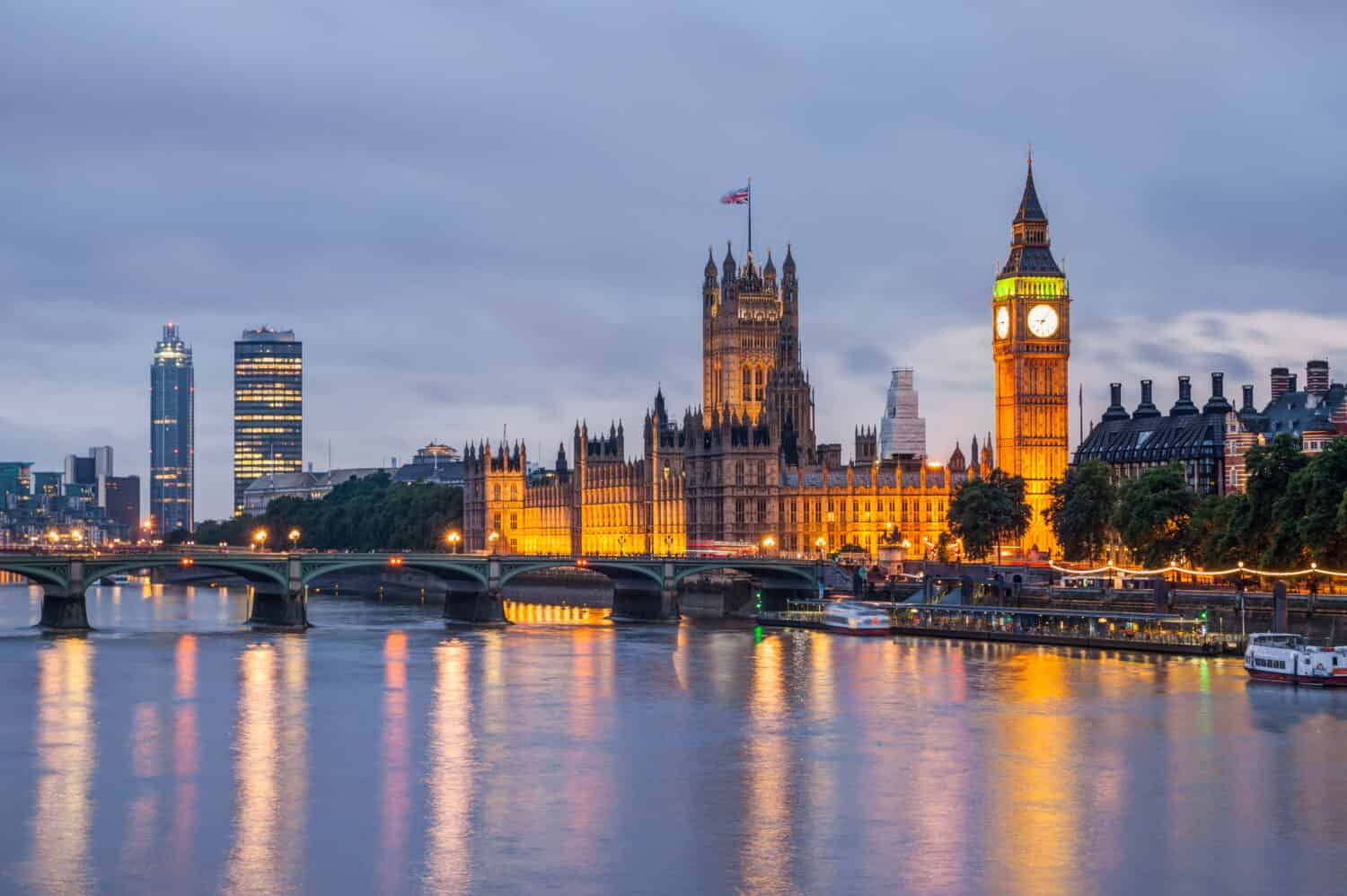
The Thames River is prone to flooding.
©Bucchi Francesco/Shutterstock.com
London is another one of the world’s major influencing centers and one that is, unfortunately, dealing with its own sinking problem. In fact, thousands of gallons of water have to be pumped out from under the city to prevent it from flooding — the same amount of water as 28 Olympic-sized swimming pools.
London also faces infrastructure issues in this regard, from the presence of the Thames River, which winds its way through the city proper. Many scientists estimate that significant tracts of the London urban area could be underground by the year 2050.
London’s primary defense against flooding is through the use of an infrastructure element known as the Thames Barrier. This man-made anti-flooding mechanism is typically only used two to three times a year. In recent years, however, it’s been employed around six to seven times a year in order to prevent the Thames from overflowing.
6. Bangkok
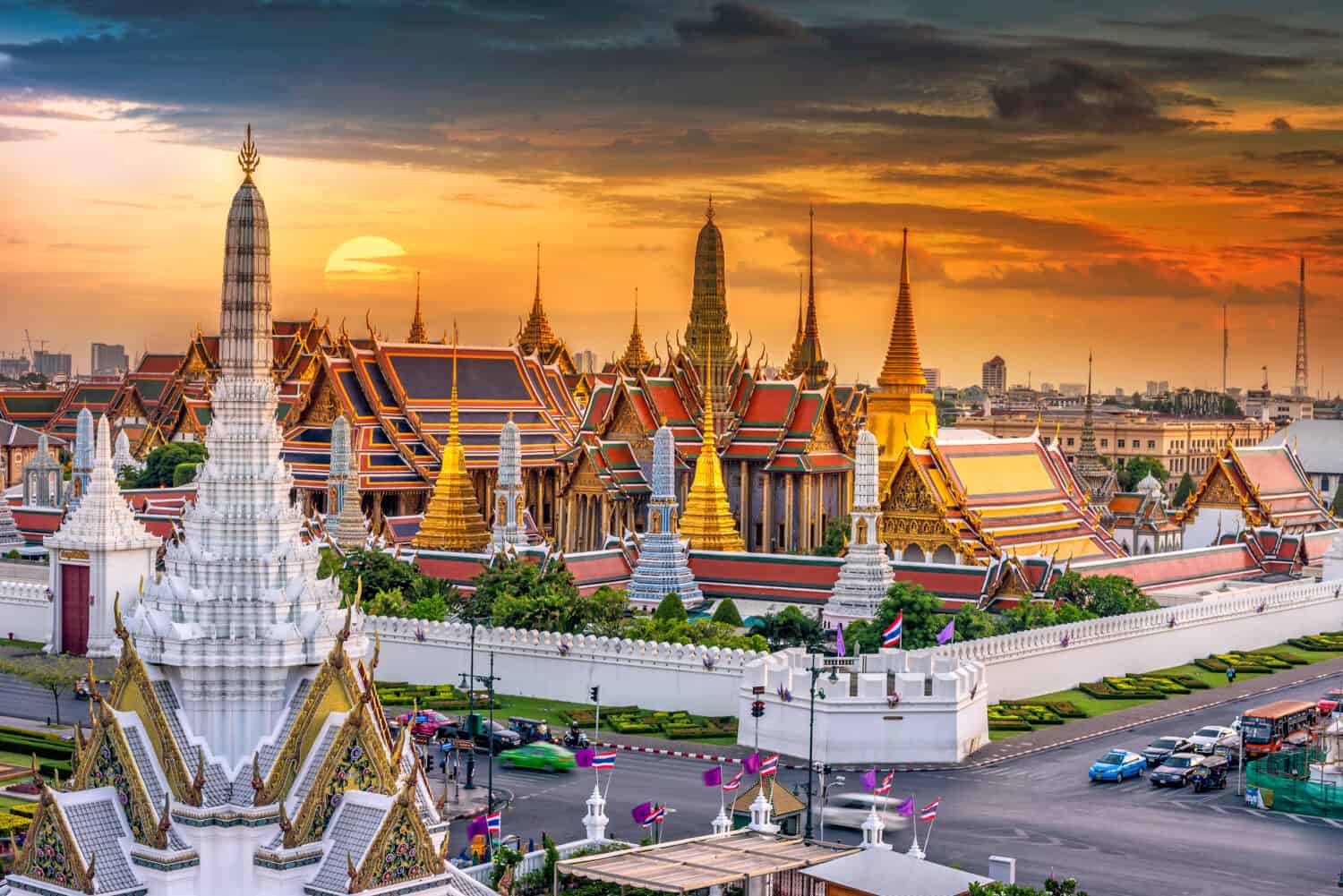
Bangkok is the largest city in Thailand.
©Travel mania/Shutterstock.com
This entry is a massive, sprawling city in Thailand that’s home to over 11 million people. Unfortunately, the city has become subject to increased flooding. This is primarily due to climate change, which has influenced the oceans and caused sea levels to rise.
The city is already dependent on natural and man-made barriers to prevent further soil erosion. Many of the sprawling Thai city’s coastal infrastructure has already disappeared in the last 40 years due to rising sea levels.
The flooding problems that this place faces are becoming more severe. More erratic and intense rainfall in recent decades has influenced many of the waterways that connect the city.
7. Mexico City
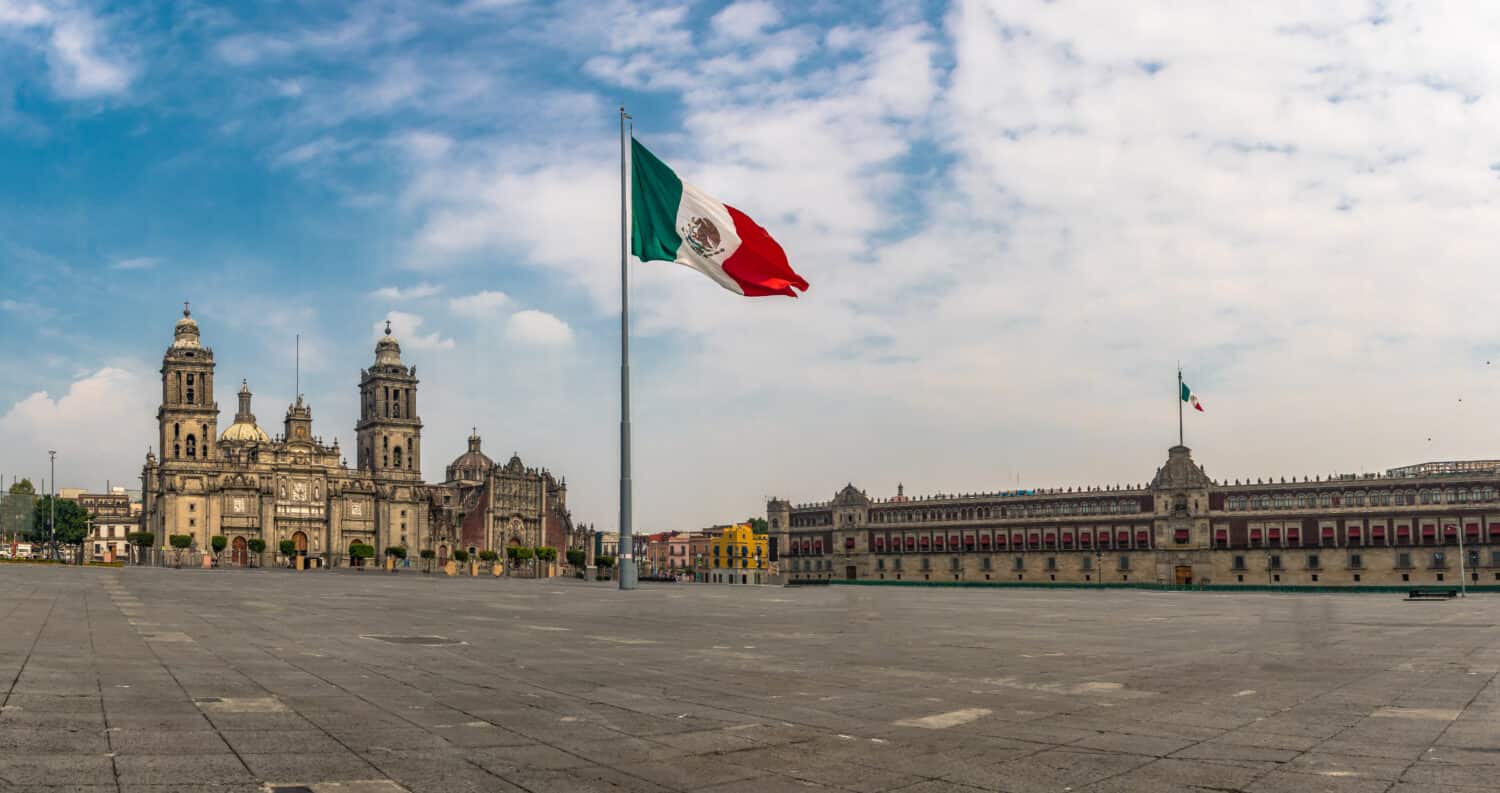
Mexico City is sinking into the lake bed below its infrastructure.
©Diego Grandi/Shutterstock.com
Another one of the world’s great capitals, Mexico City, is built atop an ancient dry lake bed high on a mountain plateau. It’s actually the same continuously inhabited urban area as the ancient Aztec capital ruled by Montezuma prior to the arrival of Europeans.
Mexico’s subsidence problem comes from a similar place to Jakarta’s. Through the process of pumping fresh groundwater out from under the city, the earth that Mexico City is built upon is becoming less stable. This problem is intensified due to the nature of the former lake bed, which doesn’t make for the most rock-solid foundation in the first place.
This can sometimes express itself in dramatic results, with the city occasionally suffering from intense earthquakes. Some scientists have estimated that Mexico City has sunk around 9.8 meters in the last 60 years – almost 32 feet.
8. Virginia Beach
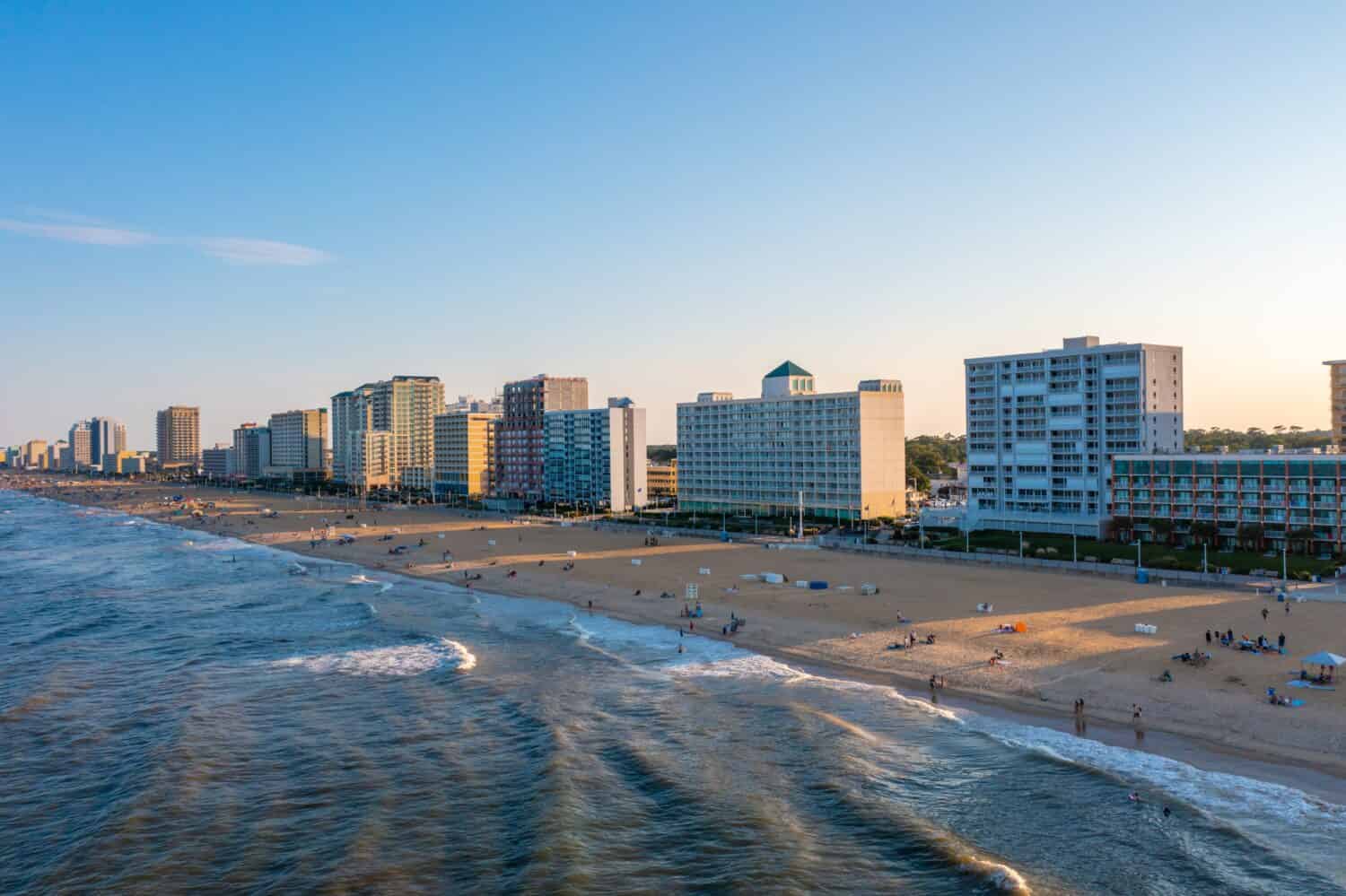
Virginia Beach experiences the highest sea level rise in the United States.
©Kyle J Little/Shutterstock.com
Much smaller than many of the other cities on this list, Virginia Beach isn’t threatened by the mass of its own excess. Rather, this small coastal city is sinking due to the fastest sea level rises that have yet to be recorded on the East Coast of the United States.
These sea level problems are inflamed by a number of different issues. Like many of the cities on this list, the integrity of the ground that Virginia Beach is built upon has been threatened by drawing groundwater.
Virginia Beach is also being influenced by some long-term geological factors. A bulge in the Earth under the city that was caused by the formation of ice-age glaciers has been slowly deflating in recent years. This influences the surrounding areas in subtle ways. While this bulge deflates and the surrounding sea rises, you have yourself in a tricky situation for the citizens of this coastal community.
9. Miami
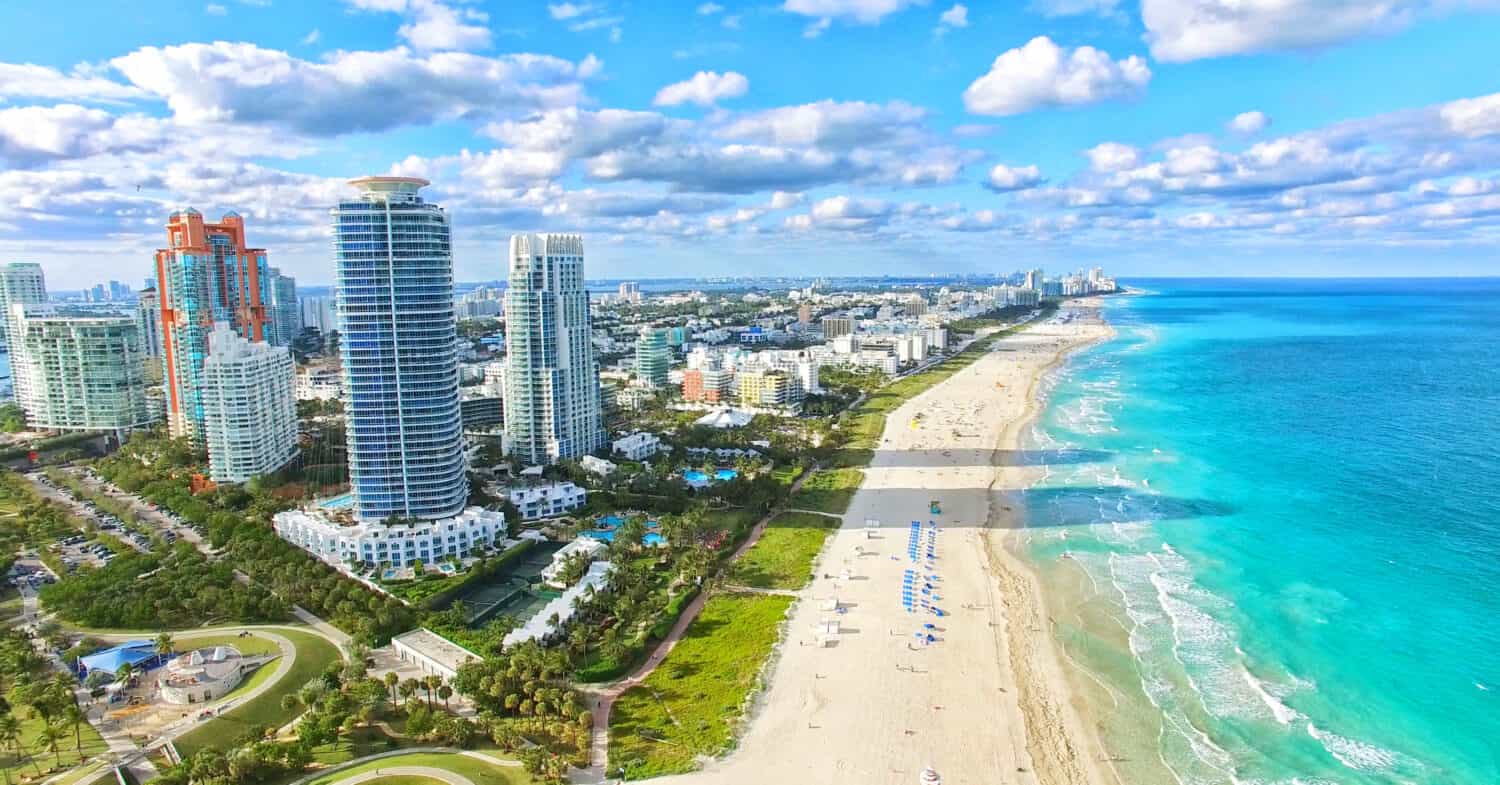
Much of Miami lies at or below sea level.
©Mia2you/Shutterstock.com
Miami is another entry on this list that might not surprise some readers. After all, the famously low-lying city in Florida has become a talking piece for talking about the issue of rising tides.
Miami is the largest city in Florida and one of the capitals of the Latin cultural presence in the United States. Built directly on the low-lying Florida coast, it’s especially vulnerable to the issue of rising sea levels. City planners in Miami are reportedly planning for a 2-foot sea level increase between the years 2060 and 2100. An increase of this magnitude would submerge over 1/3 of the existing city.
Miami’s issues with subsidence are also impacted by the type of terrain that it’s built on — a thick, movable Florida swamp. Land areas such as this are notoriously moody, as well as deeply impacted by the fluctuations of the nearby ocean.
10. Amsterdam
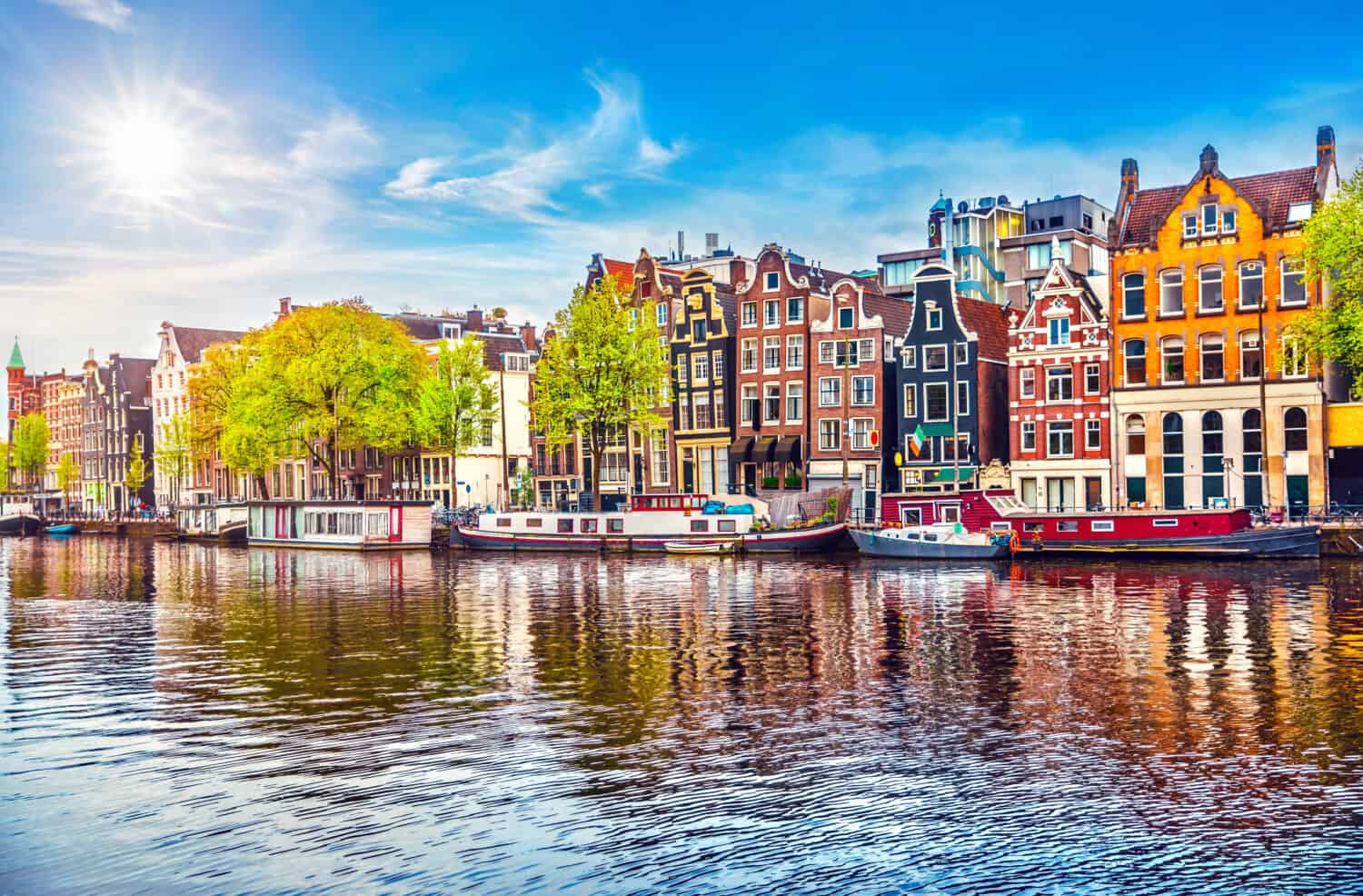
Amsterdam is crisscrossed with canals.
©Yasonya/Shutterstock.com
This is the largest city in The Netherlands, a country built on top of what used to be a coastal floodplain. This type of landmass is comprised of soft peatland bogs. This type of terrain fluctuates and shifts to higher degrees than many other types of environments.
Due to the reality of this type of soil, subsidence has been an issue in this part of the world for centuries. There are records of it being discussed as far back as 1000 AD. Despite this, the city only began implementing serious efforts to mitigate this issue about 50 years ago.
Like Venice, this European capital is built over a series of ancient canals. These provide irrigation and transportation services to its population. Also, like the aforementioned Italian city, these canals are prone to flooding when the weather is volatile.
This city isn’t the only Dutch city that struggles with subsidence issues. Much of the country is low-lying, and several of its most important population centers exist along the coast. Scientists expect the coast surrounding the Netherlands to rise approximately 2.5 feet in the coming decades. Given this, the country will have to find a way to organize itself to combat this phenomenon.
11. Dhaka

Dhaka is one of the world’s most densely populated cities.
©Lumenite/Shutterstock.com
This massive Southeast Asian city is the capital and largest city of Bangladesh. Bangladesh is a low-lying country in Southeast Asia that is one of the most densely populated places in the world.
The city is positioned at the delta of the Ganges River, which persistently floods. This was true even before some of the issues brought about by climate change and has become more severe as some of those problems have intensified. In addition, the nearby Bay of Bengal is estimated to be rising at a rate 10 times that of the global average.
The city has become a haven for many citizens in Bangladesh who have been forced to flee rising tides claiming their seaside village homes. Unfortunately, it’s very vulnerable to these tides eroding the foundation of the soil that it’s built upon. Given the immense population density of this place, there’s much at stake to fortify against continued subsidence properly.
12. Ho Chi Minh City
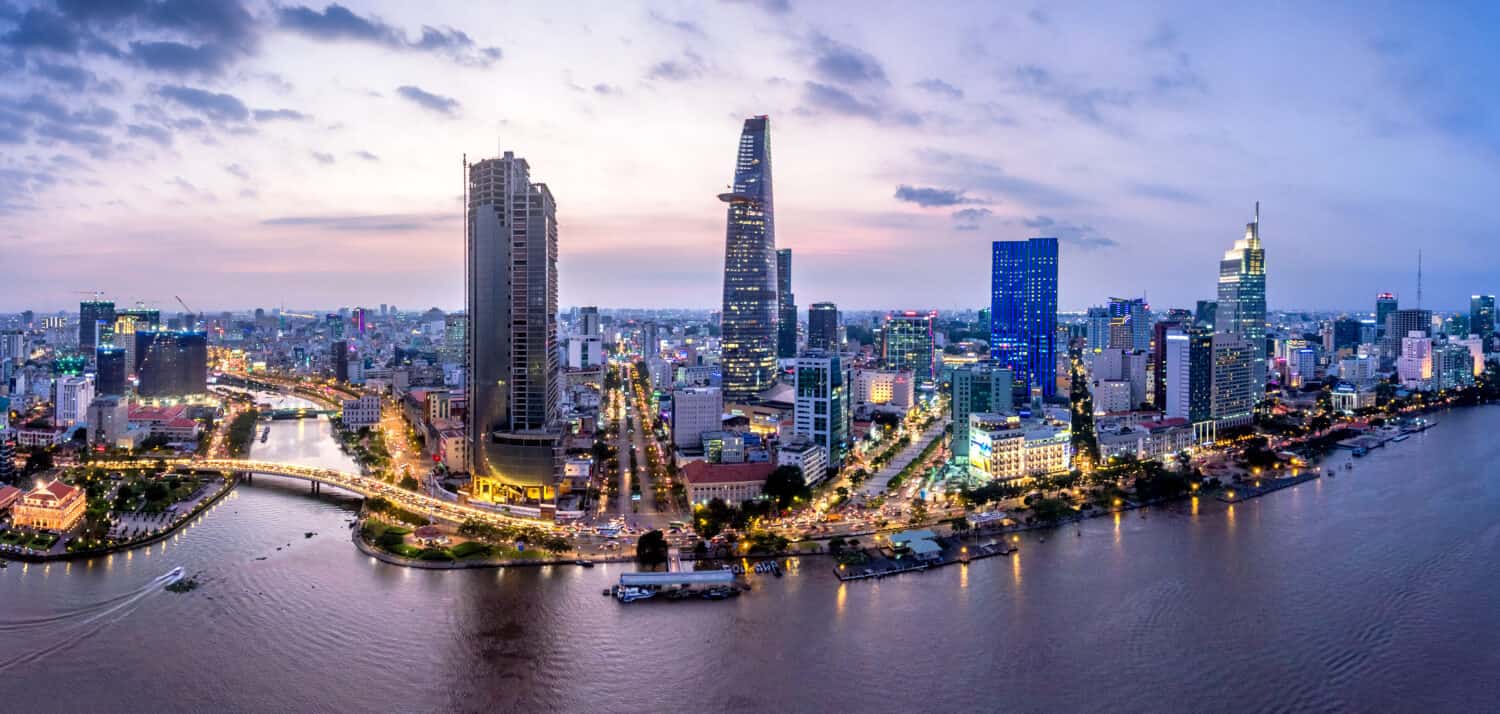
Subsidence issues beset Ho Chi Minh City.
©Nguyen Quang Ngoc Tonkin/Shutterstock.com
This entry is the largest city in Vietnam, with a population of around 9.3 million as of 2023. Also known as Saigon, the urban area is reportedly sinking at a rate of 10 millimeters per year — rather fast by the standards of these types of things.
This bustling city (also known as Saigon) is faced with dealing with many of the same issues that have beset many of the other cities on this list. A vulnerable combination of a weak soil foundation with high groundwater that surrounds it. On top of this, the city is coastal, and of a low elevation. This combination makes the city extremely vulnerable to flooding.
Much of the irrigation infrastructure in Saigon is quite antiquated and out of date. This makes properly draining the city when it floods a challenge. In addition, the rapid urban expansion of this city has eliminated many of the city’s canals. That traditionally allowed these flood waters to escape.
As the years progress, Ho Chi Minh will likely have to find ways to innovate its urban infrastructure in order to deal with these pressing issues.
13. Houston

Oil and gas drilling has weakened Houston’s foundation
©Ramiro Reyna Jr/Shutterstock.com
Houston is the largest city in Texas and the fourth largest in the United States after New York, Los Angeles, and Chicago.
Like many of the other entries on this list, Houston suffers from subsidence due to a combination of different issues. These have to do with a combination of soil texture, elevation status, and proximity to the ocean. Houston has added fuel to the fire by participating in decades of groundwater pumping and oil extraction. This has compromised the integrity of the surrounding terrain.
The coastal floodplain that Houston is built upon is perhaps the most heavy area of subsidence in the United States. Experts estimate that the region has experienced approximately 10 feet of subsidence in recent decades.
This series of factors has made the city more vulnerable during its heavy hurricane season. Like New Orleans, Houston’s proximity to the Gulf of Mexico means that this type of weather phenomenon is becoming increasingly severe and intense.
14. Lagos
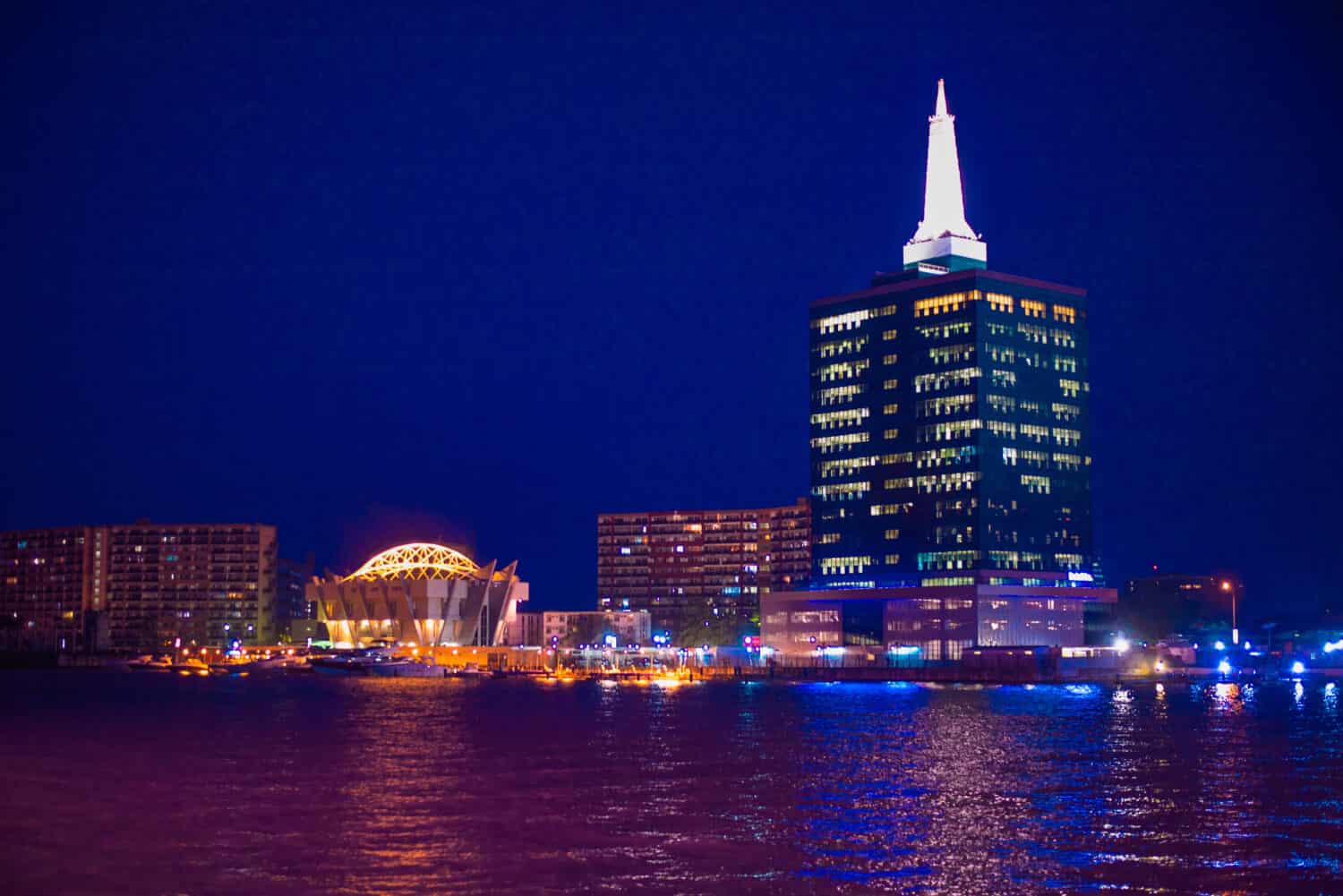
Lagos is the largest city in
Africa
.
©Alucardion/Shutterstock.com
This entry is the largest city in Nigeria, as well as the largest in Africa, at 21 million people. Despite its massive size, the city is only growing larger – as of 2023, it was one of the fastest-growing cities in Africa and the world.
This sprawling metropolis is vulnerable to the subsidence phenomenon owing to a number of reasons. First, its position on the low-lying Nigerian coast has made it vulnerable to flooding and soil erosion.
The integrity of the city’s territorial foundation is also threatened by the encroachment of the nearby Sahara desert. As the desert grows, it replaces formerly wet soil with brittleness and sand.
The African capital is also threatened by the realities of economic vulnerability. Many of its residents struggle to obtain the basic necessities that help people cope with the realities of natural disasters and chronic subsidence. Due to this issue, the population is highly vulnerable to further encroachment on their day-to-day lives.
15. Alexandria
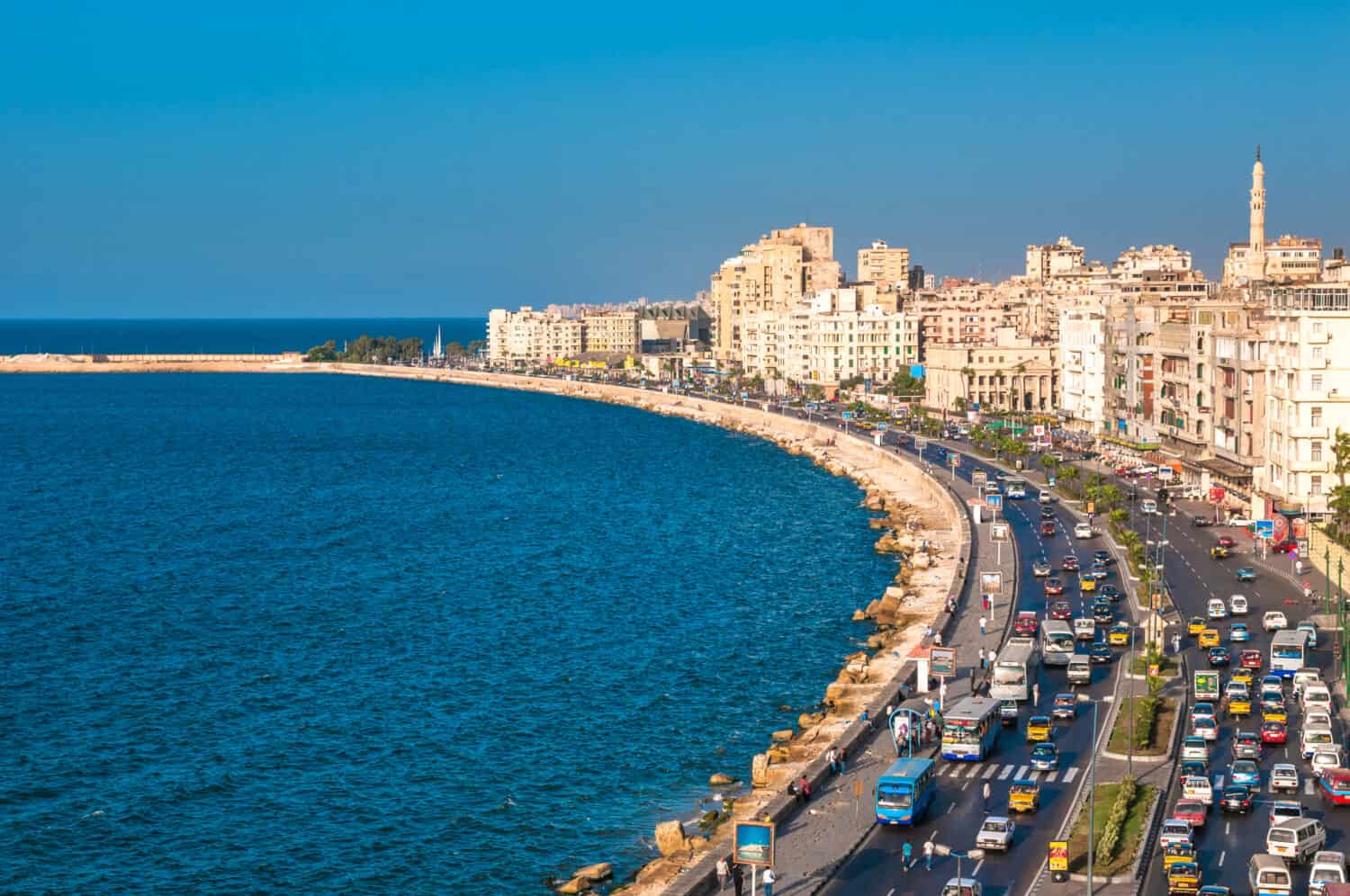
Alexandria is in danger of complete submergence.
©javarman/Shutterstock.com
Historical Alexandria is a popular tourist destination in Egypt. It’s also an important lynchpin in the Egyptian economy due to the presence of important gas and oil repositories close to the city.
In recent decades, Alexandria has become subject to increased flooding by the Mediterranean Sea. As sea levels have risen, much of the city’s former coastlines and beaches have begun to disappear.
Climate change has also brought increased storm activity to the Mediterranean region. This exacerbates the potential for flood damage. These types of tropical storms are called Meditteranean tropical-like cyclones. Many have increased in intensity in recent decades due to the rising temperatures in the Mediterranean Ocean.
The rate of sea change surrounding Alexandria is somewhat dire, according to some experts. Many predict that the city may become uninhabitable by the year 2050. This would mean that its population of 6 million will have to relocate due to displacement.
Learning from Sinking Cities
There are several reasons that a city might be sinking. Much of it has to do with a complex interplay between earth, water, and the urban infrastructure that interacts with those elements.
Many coastal cities have begun to experience the pinch from rising coastlines due to the effects of climate change. This is the case with places like New Orleans and Venice, which exist just a few feet above sea level (or even below sea level).
Other places face subsidence issues because of the type of terrain that they were built on. Amsterdam, Houston, and Mexico City are all constructed on atypical, volatile ground. This type of earth isn’t particularly suited to support the size of the city that currently exists on top of it.
As the subsidence issues that these cities face intensify, there is much to learn, both for the present day and the future. By studying this phenomenon, governments and societies can better equip themselves to cope with some of the challenges that lie ahead. It can help us construct styles of infrastructure that are better suited to deal with the realities of subsidence, erosion, and flooding.
| Number | Name |
|---|---|
| 1 | Jakarta |
| 2 | New Orleans |
| 3 | Venice |
| 4 | New York City |
| 5 | London |
| 6 | Bangkok |
| 7 | Mexico City |
| 8 | Virginia Beach |
| 9 | Miami |
| 10 | Amsterdam |
| 11 | Dhaka |
| 12 | Ho Chi Minh City |
| 13 | Houston |
| 14 | Lagos |
| 15 | Alexandria |
Thank you for reading! Have some feedback for us? Contact the AZ Animals editorial team.

